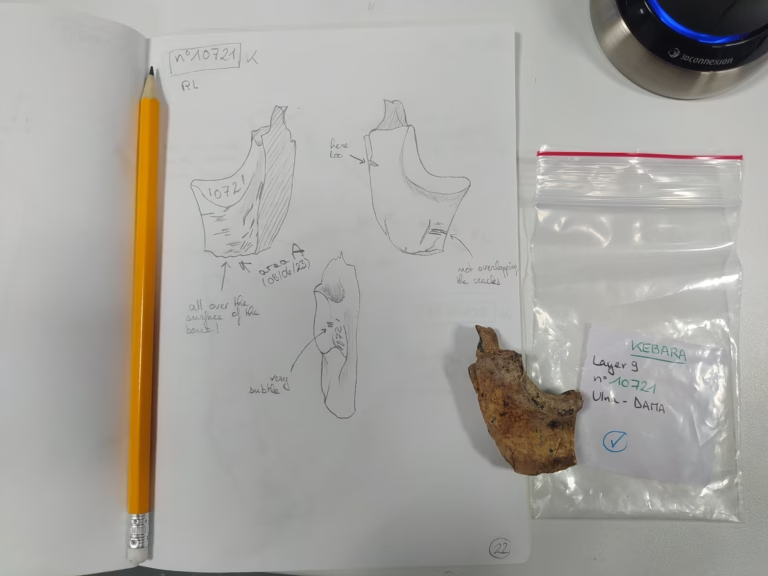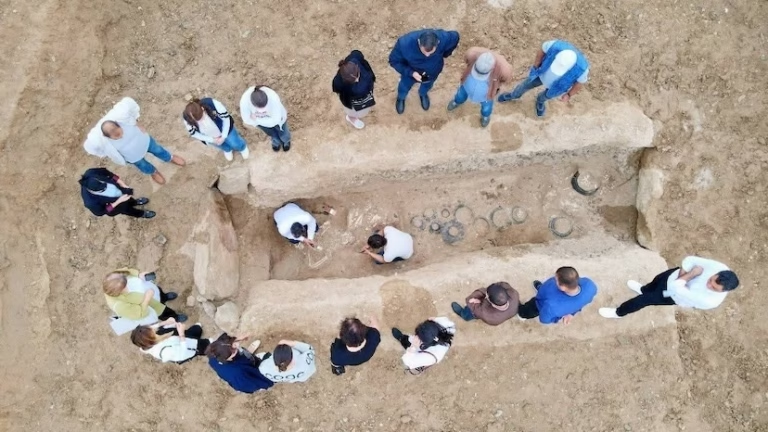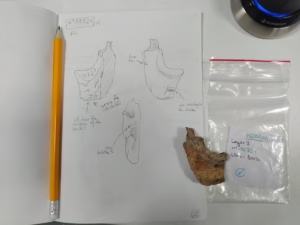Archaeologists in Tripolis Ancient City, located in western Turkey’s Denizli province, have uncovered a lavish Roman villa believed to have belonged to the elite. The structure spans 1,500 square meters and includes four rooms, two spacious halls, a colonnaded gallery, and a specially designed fish pool at the entrance.
Fish Were Raised in the Courtyard Pool—Then Served to Guests
Unlike decorative pools, this 40-square-meter rectangular pool was designed to breed fish. Terracotta pipes embedded in the walls served as protective niches for the fish to hide from sunlight. According to excavation leader Prof. Dr. Bahadır Duman, species such as carp, catfish, and eel were likely raised here and offered to guests during banquets.
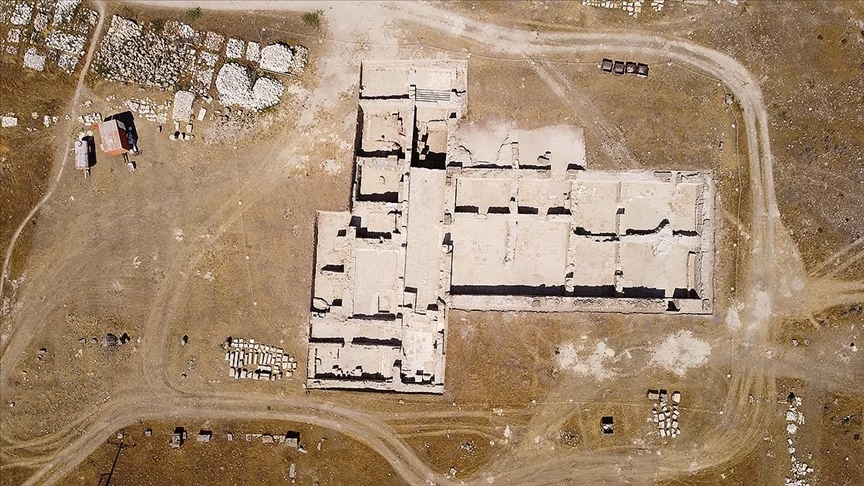
Frescoed Walls Reflect Roman Taste for Opulence
The villa’s interior walls are adorned with vibrant frescoes in shades of red, blue, yellow, and brown. These colorful decorations, along with its size and architecture, suggest the villa served both as a residence and a symbol of wealth and status during the Roman era.
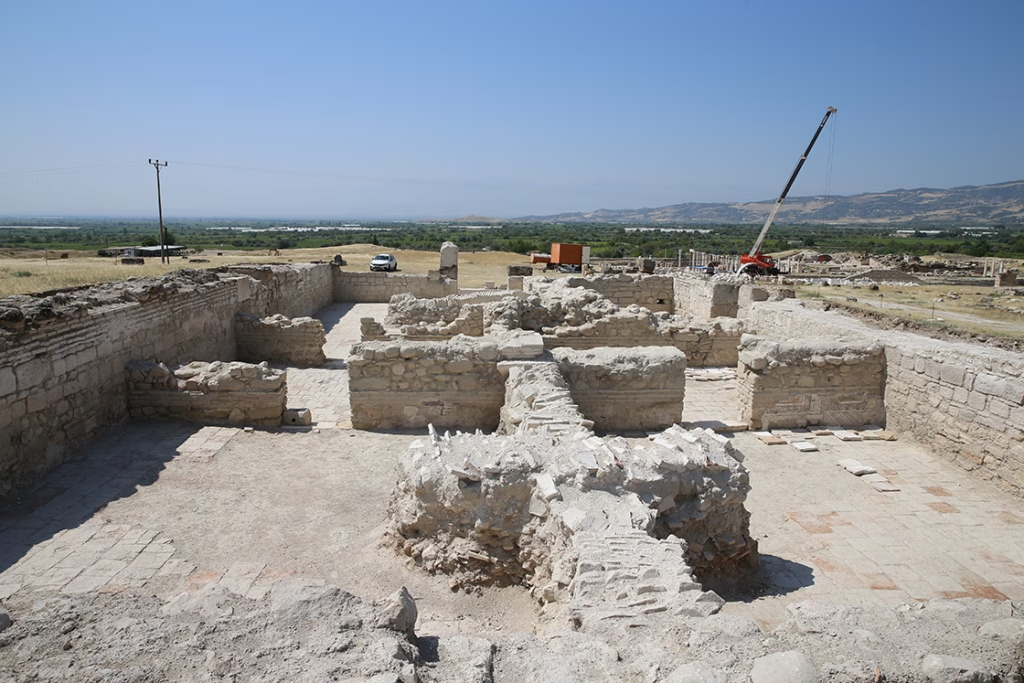
Tripolis Keeps Revealing Hidden Chapters of Roman Anatolia
Tripolis is one of the best-preserved ancient cities in western Anatolia. Previous excavations have revealed a 2,000-year-old marketplace, mosaic-paved villas, early churches, workshops, and even remnants of ancient games. This latest discovery reinforces the idea that inland Roman cities also enjoyed the luxuries often associated with coastal settlements.
📌 Where Is Tripolis Ancient City?
Tripolis Ancient City is located in the Yenicekent neighborhood of Buldan district, in Denizli province, western Turkey. Positioned at the intersection of the ancient regions of Lydia, Phrygia, and Caria, Tripolis flourished thanks to its strategic location on key trade routes.
During the Roman era, the city reached its golden age, becoming a prominent center for agriculture, textile production, and commerce. With its rich architecture, frescoed villas, agora, churches, and advanced water infrastructure, Tripolis is considered one of the best-preserved ancient cities in Western Anatolia.
Excavations have been ongoing since 2012 under the direction of Pamukkale University.
Cover Image Credit: Sebahatdin Zeyrek/AA

